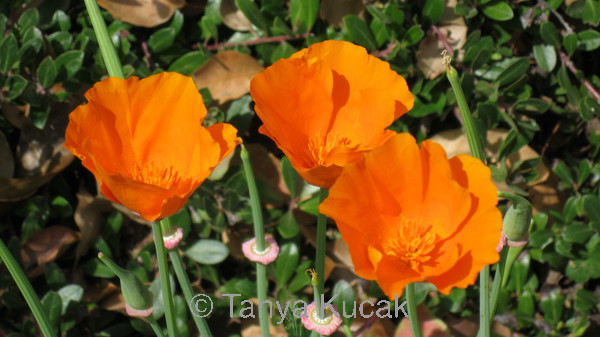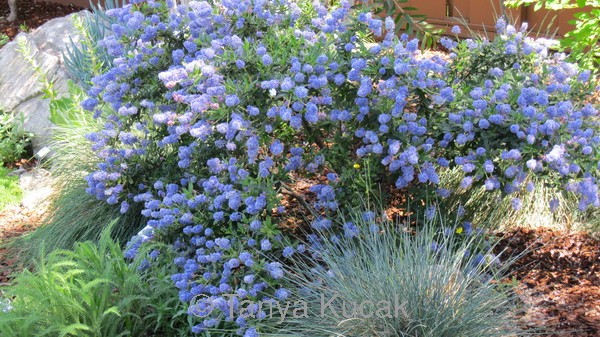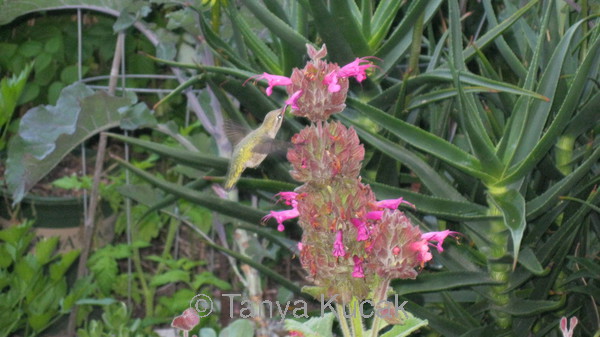
Like many of us whose interest in native plants was piqued by noticing which plants hummingbirds favored or which shrubs were buzzing with bees, kids are drawn to color and movement.
In the native habitat gardens at Los Altos schools (see the Living in Los Altos cover story), what appeals to students are not only the colorful flowers and the interesting shapes and forms of some plants, but also who else is attracted to the plants. Fragrant and touchable plants are popular, as are plants with an appealing or whimsical name and a history of use by Native Americans, according to Vicki Moore, Living Classroom founder.
The plants that have proved popular in the schools' native habitat gardens would also be good choices for a home garden.
California poppies and other seasonal wildflowers pop out of the landscape with bold, bright colors. Bumblebees like to take naps in the delicate bowl of the poppies, and smaller pollinators also visit the flowers. California poppies reseed readily, as do several other wildflowers. As long as you don't use leaf blowers on your garden soil (which you should never do anyway), you should have fresh crops each year.
It's no surprise that Oak Avenue School has oak trees. Students like the interesting galls on the oaks. If you have room for one big tree, a native oak is a good choice. Oaks support a network of beneficial insects as well as birds. Valley oaks, which lose their leaves in the winter and have gracefully drooping branches, can grow surprisingly fast.
Children like both the shiny, hard fruits of the buckeye and its spike of creamy flowers in the spring. In unwatered gardens, it loses its leaves in midsummer and sports a sculptural framework of branches, with a few fruits hanging on, until rain brings on new leaves in late winter.
The name of this plant catches their attention: monkeyflower. An adaptable perennial, it flowers profusely in shades ranging from bold apricots to soft yellows.
Many California native plants have fragrant foliage. Garden docents teach the students to rub a leaf to release the fragrance. Two of their favorites are fragrant pitcher sage and Cleveland sage, both midsize woody shrubs.
If you've seen clouds of blue flowers in late winter to early spring, chances are it's a native ceanothus in bloom. As you get closer, you may see clouds of bees circulating through the blossoms. California has dozens of ceanothus varieties, ranging from groundcovers to small trees.
Any plant that attracts hummingbirds is a favorite, Vicki Moore said. Hummingbird sage and California fuchsia are both easy to grow and irresistible to hummers.
At a Los Altos Hills garden he designed, Geoffrey Coffey also stressed the habitat value of plants for attracting kids. In a shadier location on a north-facing plant wall, family favorites included three plants with fragrant foliage. Yerba buena is a well-behaved creeping mint. Mugwort, with both a soft texture and an appealing fragrance, can be invasive in the ground, but in the plant wall, the other plants were competing well. Hummingbird sage boasts spikes of magenta flowers and a fruity aroma.

California poppies are easy to grow and come back every year. Sometimes, on a cool morning, you may find a bumblebee napping in the flower.

The gorgeous blue flowers of ceanothus draw the attention of bees and other pollinators, as well as children who love the color and the activity.

Kids love to see hummingbirds, and one native plant that's sure to attract hummingbirds is hummingbird sage.
© 2013 Tanya Kucak